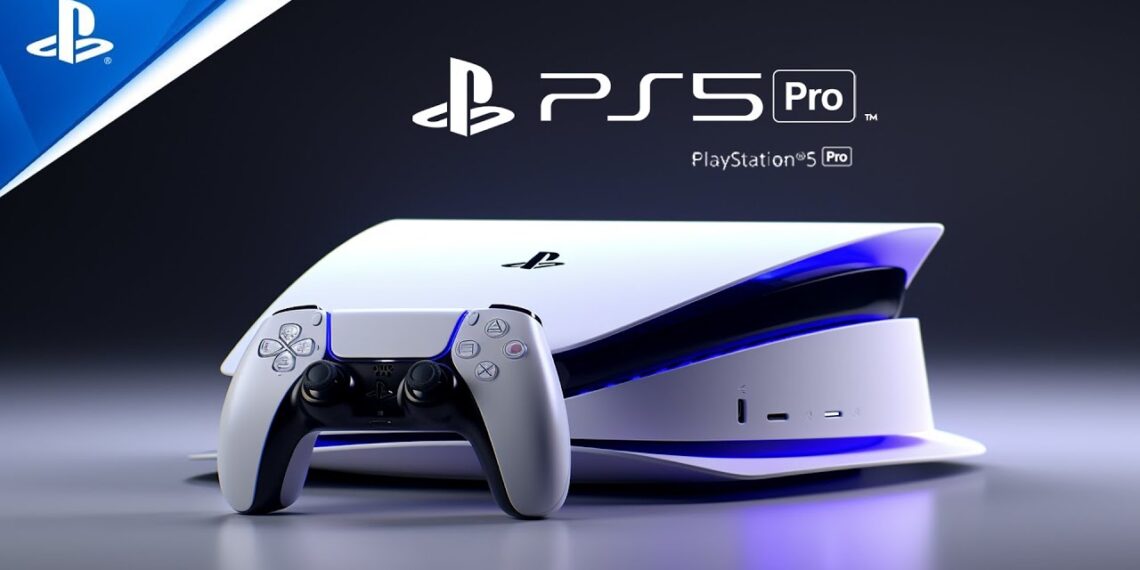Sony is shaking things up for gamers as it prepares to release a more powerful PlayStation 5 console, codenamed “Trinity”, possibly by the end of this year.
This news comes after leaks regarding the specifications of PS5 Pro surfaced online.
Per The Verge, a comprehensive list of the upcoming console’s specs, reveals improvements focused on enhancing ray tracing capabilities. Developers are already being prepped to ensure their games are compatible with the PS5 Pro, with a particular emphasis on improved ray tracing performance.
PS5 Pro Promises Enhanced Performance
The PS5 Pro comes with a more powerful GPU and a slightly faster CPU mode compared to the standard PS5. These changes translate to a console more adept at rendering games with ray tracing enabled, potentially achieving higher resolutions and frame rates.
Sony seems to be encouraging developers to leverage ray tracing features more extensively with the PS5 Pro. Games that offer great enhancements will be eligible for a “Trinity Enhanced” (PS5 Pro Enhanced) label.
Documents outlining the upcoming console show that the PS5 Pro’s GPU rendering will be “roughly 45 percent faster” than the standard PlayStation 5. This enhanced GPU will be larger and utilize faster system memory to bolster ray tracing performance in games.
Added to this, Sony has implemented a “more powerful ray tracing architecture” in the playstation, with speeds up to three times faster than the regular PS5.
Backward Compatibility and Developer Tools
Sony is focused on continuing sales of the standard PS5 even after the launch of the Pro model. The company expects game developers to create unified packages compatible with both consoles, with existing games receiving patches to enable higher performance on the PS5 Pro. Developers currently have access to test kits and are expected to ensure all games submitted for certification in August are compatible with the PS5 Pro.
CPU and Memory Upgrades
While the PS5 Pro retains the same CPU as the standard PS5, it introduces a new mode that pushes its clock speed higher. This “high CPU frequency mode” targets 3.85GHz, offering a 10% increase over the regular PS5. Developers will have the option to choose between the standard 3.5GHz mode and the high CPU frequency mode.
The standard mode functions similarly to the regular PS5, allocating power to the CPU based on specific needs. The CPU operates at 3.5GHz when power allows, but may throttle down during power-intensive tasks. Sony assures that these lower frequencies are infrequent, with any unused CPU power being redirected to the GPU.
The high CPU frequency mode on the PS5 Pro diverts more power to the CPU, resulting in a slight decrease in power allocated to the GPU. This downclocking of the GPU by around 1.5% translates to “roughly 1 percent lower performance,” according to Sony.
The PS5 Pro also features improvements to system memory for developers. Standard PS5 memory operates at 448GB/s, but the PS5 Pro sees a significant 28% bump to 576GB/s. Sony claims that due to the PS5 Pro’s more efficient memory system, the “bandwidth gain may exceed 28 percent.”
Developers will also benefit from increased access to overall system memory. Games can utilize an additional 1.2GB of system memory on the PS5 Pro, bringing the total allocation to 13.7GB compared to the 12.5GB available on the base PS5.
PSSR Upscaling and Potential for 8K Support
The increased memory speed and allocations could prove beneficial for Sony’s new PlayStation Spectral Super Resolution (PSSR) technology. This serves as Sony’s answer to upscaling solutions like Nvidia’s DLSS and AMD’s FSR, aiming to improve frame rates and image quality on PlayStation consoles.
The PS5 Pro comes with a “custom architecture for machine learning” that supports 300TOPS of 8-bit computation. This architecture underpins Sony’s custom PSSR upscaling solution, designed to replace a game’s existing temporal anti-aliasing or upsampling implementation.
Sony highlights that “inputs are quite similar to DLSS or FSR” and confirms full HDR support. This PSSR functionality requires around 250MB of memory, justifying the increased memory allocations on the PS5 Pro. Sony estimates a latency of around 2ms for upscaling a 1080p image to 4K and expresses its intent to support resolutions up to 8K while further reducing latency in the future.
Holiday 2024 Release and Enhanced Gaming Experience
With developers reportedly able to access test kits and a push for compatibility with the new PlayStation by August, a holiday season launch for the console seems highly likely. Sony appears to be following a similar strategy as with the PS4.






